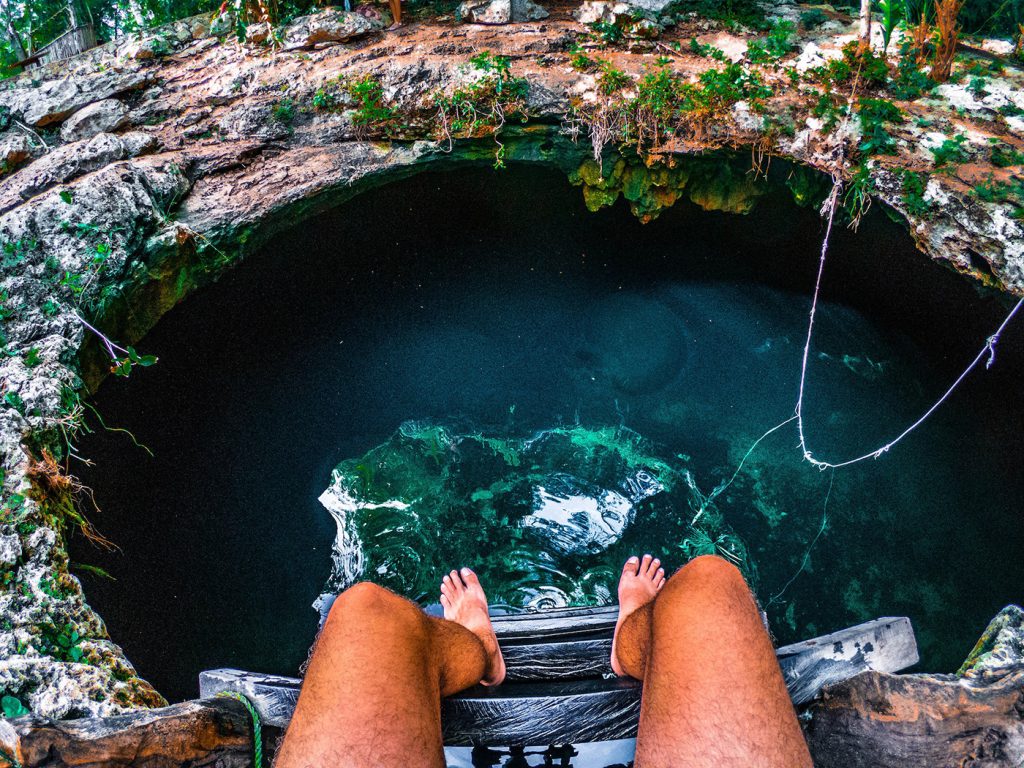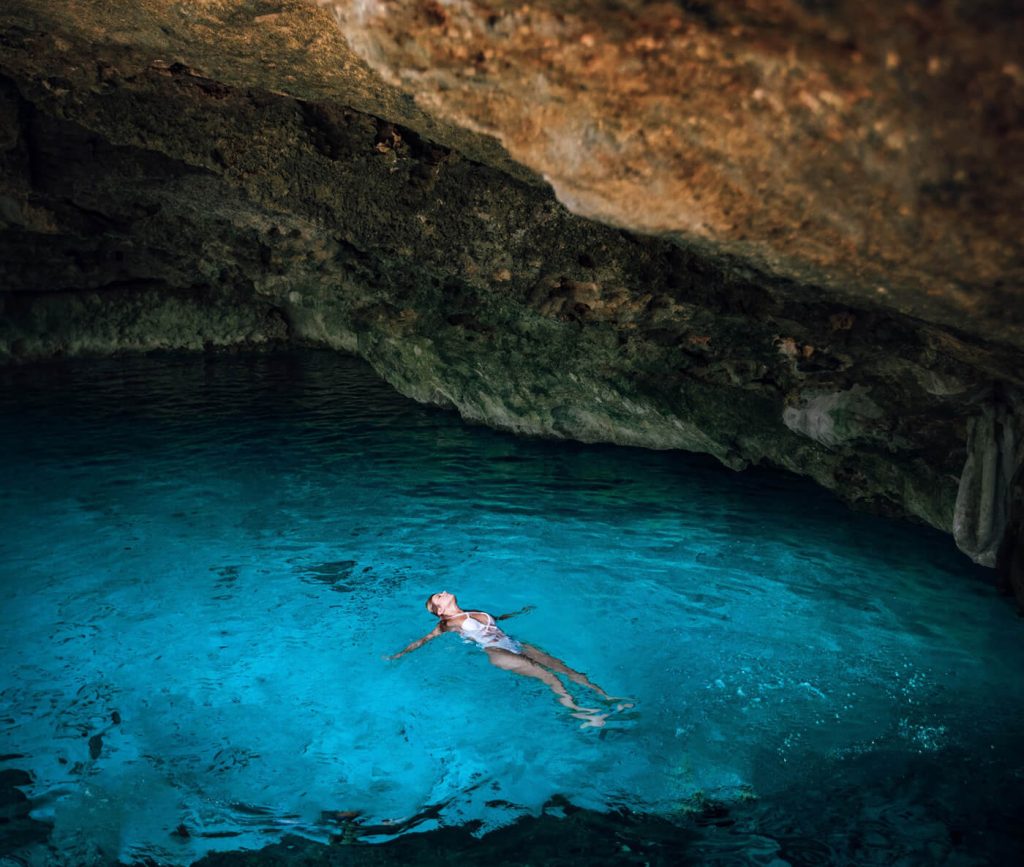When exploring Tulum, the ancient ruins and pristine beaches naturally make it to the top of most travel itineraries. However, one often overlooked treasure that stands out from the rest is the Cenote Calavera. A cenote is a natural pit, or sinkhole, created by the collapse of limestone bedrock, exposing groundwater beneath.
These cenotes have been around for thousands of years, providing an essential water supply to ancient Mayan civilization, and there are hundreds surrounding Tulum.
Cenote Calavera, also known as the ‘Temple of Doom,’ holds a special allure for those seeking an exhilarating experience off the beaten track. This guide will provide you with everything you need to know about this unique natural wonder.
Getting To Cenote Calavera
Nestled in the jungle just outside of Tulum’s main town, Cenote Calavera is easily accessible by bike, taxi, or a short drive. You can rent a bike from various spots in Tulum, giving you the freedom to explore at your own pace. The cenote is only about 2 km west of Tulum, making it an easy 10-minute bike ride.

What Makes Cenote Calavera Special?
Unlike other cenotes with open, exposed water, Cenote Calavera may appear deceivingly ordinary at first glance, appearing more like a small pond. But beneath the surface, a thrilling adventure awaits. The cenote consists of three holes on the surface—two small ones that resemble eyes, and a larger one, hence the name ‘Calavera,’ meaning ‘skull’ in Spanish.
Visitors can either descend down a wooden ladder into the larger opening or plunge into the water from one of the smaller ‘eye’ holes. For thrill-seekers, there’s an option to jump from a ledge into the water below through the ‘mouth’ of the skull, offering a rush unlike any other.
Snorkeling and Diving at Cenote Calavera
The underwater world of Cenote Calavera is breathtaking. The clear, cool water reveals an array of stalactites, stalagmites, and haloclines—distinct layers of freshwater and saltwater.
Snorkeling in Cenote Calavera allows you to witness a fascinating ecosystem of aquatic flora and fauna. You might catch glimpses of freshwater fish, and with a bit of luck, the occasional turtle.

For scuba divers, Cenote Calavera offers an unforgettable experience. It’s one of the entry points to the world’s largest underwater cave system, Sac Actun, and boasts an awe-inspiring light show around noon, when sunlight streams through the openings above, illuminating the cenote’s depths.
However, keep in mind that cave diving is not for beginners, and requires special certification. It’s essential to hire a guide and make sure you are adequately trained and equipped before embarking on a dive.
Facilities and Admission
Cenote Calavera maintains basic facilities for its visitors, including restrooms, changing areas, and a small snack bar. It’s open from 9 AM to 5 PM, and the entry fee is 250 pesos ($15 USD). If you plan on diving, additional fees apply for guide services and equipment rental.
Remember to bring your own snorkeling gear, as there are no rentals onsite. Also, the cenote prohibits the use of sunscreens and lotions to preserve the water’s purity.
Respect and Preservation
Cenotes hold deep cultural and spiritual significance for the Mayan people. They were considered sacred gateways to the underworld, used for rituals and ceremonies. Therefore, it’s crucial to treat thesenatural wonders with respect and leave them as you found them.
In the face of increasing tourism, it’s crucial to balance enjoyment with preservation. Avoid touching any formations underwater, as they take thousands of years to form and can be easily damaged.
Best Time to Visit Cenote Calavera
The best time to visit Cenote Calavera is early in the morning when the site opens, or later in the afternoon, to avoid the midday crowds. The sunlight filtering through the openings in the cenote is most beautiful around noon, creating a mesmerizing play of light and shadow underwater.
The cenote is open year-round, but the best time to visit Tulum is between October and December, when the weather is most pleasant.
What to Bring
Make sure you’re prepared for your adventure to Cenote Calavera. Bring a swimsuit, towel, dry change of clothes, waterproof camera, bottled water, and cash for the entrance fee and any snacks you might want to purchase. Don’t forget your sense of adventure!
Nearby Attractions
Given its proximity to Tulum, a visit to Cenote Calavera can easily be combined with other nearby attractions. The Tulum Ruins are just a short distance away and are a must-see for history buffs. Alternatively, you could explore other nearby cenotes such as Cenote Dos Ojos or the Gran Cenote.
Cenote Calavera Conclusion
Cenote Calavera offers an exhilarating and unique experience for those who dare to explore its depths. From the adrenaline rush of the initial plunge to the tranquil exploration of its underwater world, it’s a destination that captivates visitors with its natural beauty and thrilling adventure.
As you plan your visit, remember to respect and preserve these natural treasures so future generations can also enjoy their allure.











